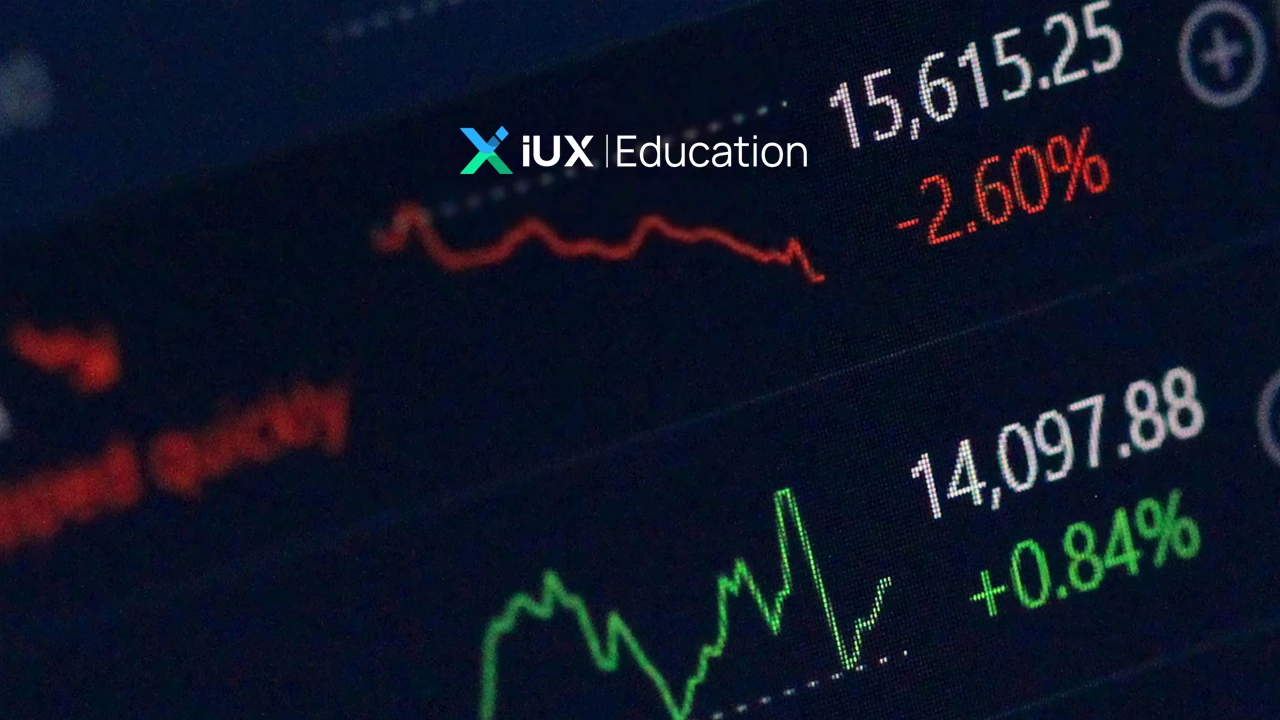CFDs are complex instruments and come with a high risk of losing money rapidly due to leverage. 76% of retail investor accounts lose money when trading CFDs with this provider. You should consider whether you understand how CFDs work and whether you can afford to take the high risk of losing your money.
CFDs are complex instruments and come with a high risk of losing money rapidly due to leverage. 76% of retail investor accounts lose money when trading CFDs with this provider. You should consider whether you understand how CFDs work and whether you can afford to take the high risk of losing your money.

How to Use Stock Market Indices for Basic Trend Analysis
Before we dive into today's article, I'd like everyone to consider this: Why is it that when we turn on a financial news channel or visit any news website, we often see reports on the rise and fall of stock market indices in major markets?
The average person might think, "Well, it's financial news, so of course they report index numbers." But for investors, these indices are actually one of the compasses that indicate many things and help adjust investment strategies to align with market trends. Today, we'll help you understand this better.
What are stock indices and how do they represent the market?

Stock indices are indicators that reflect the movement of stock prices in the stock market. They represent the average price of a selected group of stocks, providing an overview of the entire stock market. These indices reflect changes in most stock prices in the market and are used as a guide for investment decisions. However, it's important to understand that indices only provide an overall picture, and some individual stocks may move differently from the index's direction.
Stock indices are crucial tools that reflect the overall picture of the stock market by showing the movement of most stock prices in the securities market. An index is calculated from the total market value of all stocks included in that index compared to the value on the base date. This allows investors to see the overall market trend, whether it's bullish or bearish.
When an index rises, it indicates that most stock prices in the market are increasing, reflecting investor confidence and a good economic climate. Conversely, if an index declines, it reflects that most stock prices are decreasing. However, indices only provide an overview, and some individual stocks may move contrary to the index.
Which important indices should we keep on our list?

Many investors follow stock market indices as essential tools to measure the overall picture and direction of financial markets. Each index reflects the performance of a group of stocks or securities representing a specific market or industry. Here's a list of important indices you should know:
Major Global Indices
-
S&P 500 (United States)
-
Dow Jones Industrial Average (United States)
-
NASDAQ Composite (United States)
-
FTSE 100 (United Kingdom)
-
DAX (Germany)
-
CAC 40 (France)
-
Nikkei 225 (Japan)
-
Shanghai Composite (China)
-
Hang Seng (Hong Kong)
Additional information : The S&P 500 consists of 500 large-cap companies listed on U.S. stock exchanges, with a diverse industry distribution: 27% information technology, 15% healthcare, and 11% each for consumer discretionary and communication services.
The Dow Jones includes only 30 leading companies and is calculated using a price-weighted method rather than market capitalization. It has a fairly good industry distribution, with the highest proportions in industrials (21%), financials (18%), consumer services (17%), and healthcare (15%).
The NASDAQ Composite is notable for its technology focus, with technology stocks making up 52% of the index and consumer stocks 16%.
Industry Group Indices
-
MSCI World Information Technology Index
-
S&P Global 1200 Health Care Index
-
S&P Global 1200 Consumer Staples Index
-
S&P Global 1200 Financials Index
-
S&P Global 1200 Energy Index
Stay aligned with global market trends using IUX.
Access real-time index data, smart analysis tools, and seamless trading on major markets like the S&P 500, NASDAQ, and Dow Jones.Start investing with confidence on IUX today.
How to read and interpret stock market indices

Reading and interpreting stock market indices is a skill that helps investors better understand market conditions. Start by observing the direction of index movement—whether it's rising, falling, or stable—which reflects the overall market situation at that time.
Comparing index values across different periods helps to clearly see market developments, such as day-to-day, weekly, or monthly comparisons. Additionally, examining long-term upward or downward market trends from index charts provides a better understanding of the market's main direction.
Using indices in conjunction with other technical tools, such as moving averages or RSI (Relative Strength Index), can provide a more comprehensive analytical perspective.
| Tip: Focus on trend direction first Before diving into details, always identify whether the index is trending up, down, or sideways. This simple step helps you align your investment strategy with the broader market. |
Examples of market trend analysis
Stock market indices can be powerful tools for assessing market direction. Below are clear examples using globally recognized indices.
-
Long-term trend analysis
Suppose we examine the S&P 500 Index over the past 5 years. If it moved from 2,400 points to 4,500 points while forming higher highs and higher lows, this suggests a strong long-term uptrend. Investors often see this as a signal of solid economic growth and strong corporate earnings over time.
-
Medium-term trend
Looking at the past 6 months of the NASDAQ 100, we might notice that the index has been fluctuating between 16,000 and 18,000 points without breaking out. This suggests a sideways or consolidating market, where traders are waiting for new catalysts such as earnings reports or interest rate decisions.
-
Short-term trend
In the past month, let’s say the Dow Jones Industrial Average (DJIA) has climbed modestly, trading volume has increased, and the RSI sits around 62—below the overbought threshold of 70. This would indicate a short-term bullish trend with moderate upward momentum.
In-depth analysis
If the above example involved comparing the S&P 500 to the Russell 2000, we might notice that the S&P 500 has risen more strongly over the past month. This suggests that large-cap stocks are currently outperforming small-cap stocks, reflecting stronger investor confidence in bigger, more stable companies during that period.
This is a simple demonstration of how stock market indices can be used to analyze overall market conditions, sector performance, and investor sentiment.
How can we analyze stock indices along with fundamental factors?
Analyzing stock indices in conjunction with global economic fundamental factors is an effective method for predicting market trends. Investors should focus on key economic indicators such as -
GDP growth rate, which reflects the overall economic picture, Inflation rate, indicating changes in the price levels of goods and services, Consumer and producer confidence indices, which are important indicators reflecting future economic outlooks, Lastly, the unemployment rate, which shows the state of the labor market.
Monitoring these figures from major economies like the United States, China, and Europe will help investors better understand global economic directions and predict potential impacts on stock indices. In particular, analyzing the relationship between these economic figures and past stock index movements will enable investors to assess trends more accurately.
| Tip: Don’t rely on just one index. Cross-checking global indices—such as the S&P 500, NASDAQ, and Nikkei—provides a more complete view of global market sentiment and risk conditions. |
Conslusion
Stock market indices are powerful tools that give investors a clear view of overall market sentiment and economic direction. By understanding how indices move, comparing trends across different time frames, and combining them with technical and fundamental analysis, investors can make more informed decisions. Learning to read these indicators helps you stay aligned with market trends and adjust your investment strategy with greater confidence.
💡FAQs
Q: Why are stock market indices important for investors?
A: Indices summarize the movement of large groups of stocks, making it easier to understand overall market sentiment. They help investors assess whether the market is bullish, bearish, or moving sideways without analyzing individual stocks one by one.
Q: Can stock indices predict future market movements?
A: Not exactly. Indices reflect current and past market behavior. However, when analyzed together with technical indicators and economic data, they can help investors estimate possible future trends.
Q: Do all stocks move in the same direction as the index?
A: No. An index shows the market’s overall direction, but individual stocks can move differently based on company-specific news, earnings, or sector trends. This is why both index analysis and individual stock analysis are important.
Note: This article is intended for preliminary educational purposes only and is not intended to provide investment guidance. Investors should conduct further research before making investment decisions.
Source 1




